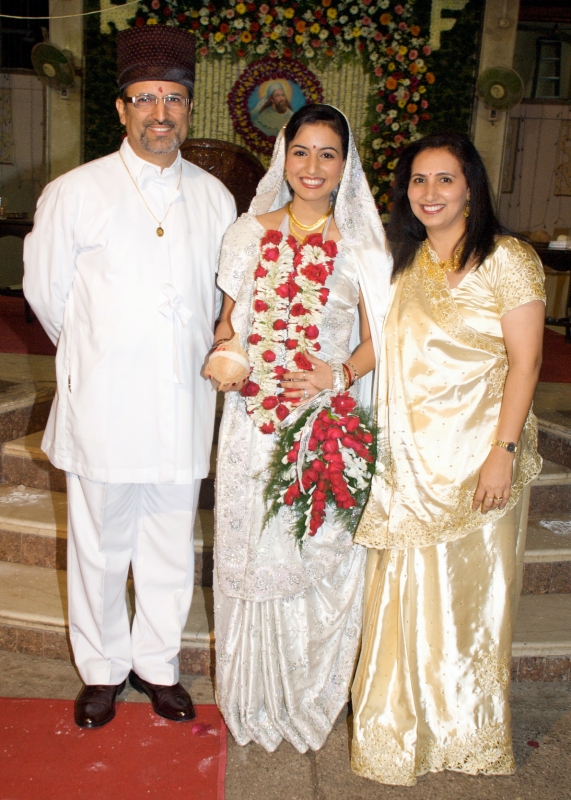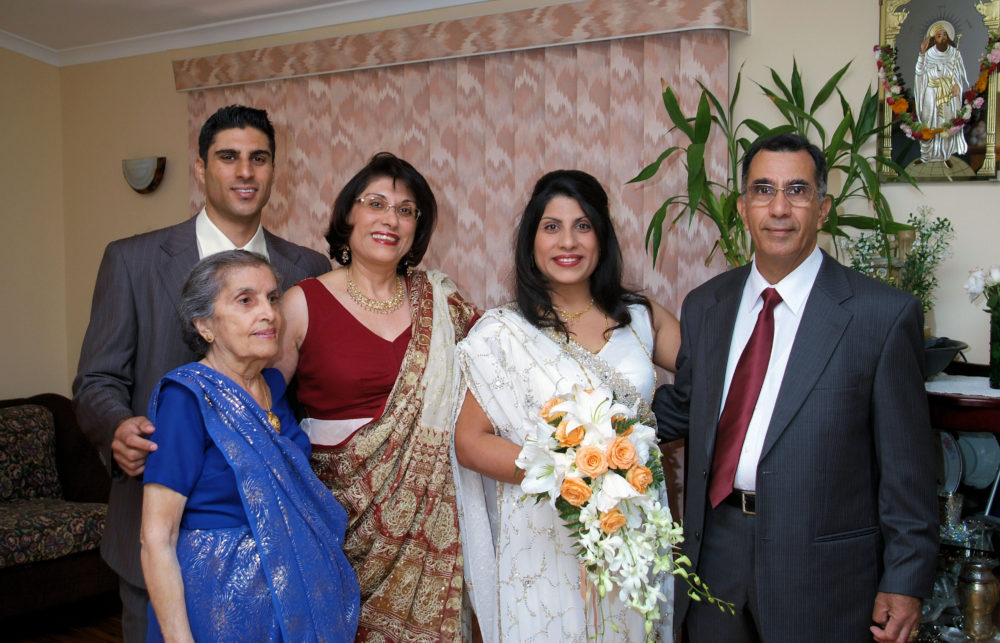By Neena Bhandari
Sydney, 21.03.2010 (Women’s Feature Service): It’s a Sunday morning, a fire is burning on a silver urn in the sanctum sanctorum as about 30 children pray with a priest in the main hall of the Darbe Meher, place of worship and community activities for Zoroastrians, in the Sydney suburb of Annangrove.
Nestling amidst verdant surroundings with a tranquil billabong (pool of water) and fruit trees, the Darbe Meher has become the epicentre of learning and festivities for Zoroastrians, who have migrated to Australia from India, Pakistan and Iran since the 1960s.
According to the Australian Bureau of Statistics’ 2006 Census data, there are 2110 people (1156 males and 954 females) practising Zoroastrianism, the pre-Christian faith founded in Persia (Iran) by Prophet Zarathushtra who believed in a single God, Ahura Mazda.
Many Zoroastrians from Persia migrated to India around 10th century A.D to escape Arab-Muslim persecution and came to be referred as Parsis. They largely settled in Mumbai and Gujarat and many of them have since migrated to other countries like Australia.
When Villie Meher-Homji, a scientist, migrated here from Mumbai in 1970, her biggest challenge was to infuse in her children the same love and respect she felt for Zoroastrian culture and tradition.
“During the 1970s there was dominance of western religion in Australian schools. Our children did not want to appear different from their mates. So a `Sunday school’ was started in a Sydney church hall to prepare kids for Navjote, where at the age of 7-8 the child is initiated into the Zoroastrian religion”, says Villie.
With only an estimated 200,000 people practicing Zoroastrianism worldwide, most parents go to great lengths to ensure their children understand and identify with their rich heritage and religion. “Sunday school is mandatory for our two kids”, says Jamshedpur-born Dr Pheroza Daruwalla, a senior lecturer at the School of Management at University of Western Sydney, who migrated to Australia in 1991 from the United States. She has been giving talks at her children’s state school on Zoroastrianism.
And Mumbai-born, second generation Iranian Zoroastrian, Seema Honarmand, who migrated here in 1999 has been encouraging her children to speak Gujarati and Persian at home and regularly attend religious ceremonies.
“Unfortunately, we do not have fire temples in Australia but whenever we visit India, we take our children to the temple to familiarise them with our rituals and ceremonies. Personally, I make the best of both worlds. I keep to my Zoroastrian beliefs of moderation in whatever I do and discard the excessive lifestyle of Australians”,
says Seema, who is President of the Australian Zoroastrian Association (AZA), Sydney.
While preserving their Zoroastrian tradition and culture based on simple tenets of good thoughts, good words and good deeds, the Parsi Diaspora has blended well with mainstream Australians and carved a niche as an enterprising and successful community.
“Parsis are highly respected here for their friendliness, adaptability, high level of education and love for sports — especially cricket”, says Kersi Meher-Homji, scientist and cricket writer.
Scholars have also referred to Zoroastrianism as the world’s first ecologically conscious religion that teaches respect for the four fundamental elements of nature – fire, water, earth and air and deems polluting a sin.
“Our heritage makes us very proud. Our traditions are flexible, encouraging friendship and fun so we have not had any problem fitting in with the Australian way of life”, says Dinaz, Mehta, who was born in Karachi to Zoroastrian parents. She migrated to Australia with her husband in 1981.
“My daughter was 18 months old when we immigrated. She married an Australian boy last year and we had a ceremony that blended the east with the west”, says Dinaz, who works as an executive assistant in the Department of Education.
Traditional Zoroastrians believe that religion and ethnicity are inseparable and one must marry in the faith they are born in. “I would like my kids to marry a Parsi. When you come from the same socio-economic background and have similar ways of running a home, life becomes infinitely easier. Marriage is hard work anyway so why complicate it further with explanations for basic ways of doing things”, says Pheroza who has just commenced a second doctorate at the University of Sydney on `Zoroastrianism, Diaspora and Pilgrimage’.
Some Parsi customs are abbreviations of traditional Gujarati ceremonies the community picked up living in Gujarat for almost 1400 years and they are not really traditional Persian or ancient Iranian customs.
Growing up in India, it was ingrained in Villie’s mind that to keep the religion alive, it was imperative to marry a Parsi. She says, “My elder son married an Australian girl. Living in this country, I strongly feel that as long as children find happiness with their true love they should go ahead and unite with the person of their choice and receive full support and blessings from their parents. Here, it is essential that the Zoroastrian wedding is followed or preceded by a Marriage Celebrant or Justice for Peace for legal purposes”.
Mixed marriages and ceremonies modified to suit both cultures are not uncommon. “Mixed marriages are a fact of life now, both in Australia and in India. My daughter got married in December and we had a civil ceremony for her marriage, but a week later we had a Zoroastrian ceremony performed by our head priest.” says Mumbai-born Purvez Kolsawalla, a lecturer in Marketing at a Tertiary college in Sydney, who migrated here in 1969.
Marrying outside the faith is attributed as one of the reasons for the dwindling Parsi community, but as Sydney-born Kainaaz Choksey, a pharmacist, says “We need to accept that inter-racial marriages will be a part of the norm for our religion. However, it is difficult to totally integrate into Australian society as home life is a reflection of Parsi culture be it food, language, traditions and outside the home you are with people who know nothing about your background and religion”.
But Hyderabad-born Feroza Bachana, 47, a registered nurse at the Royal North Shore hospital, who migrated to Sydney in 2006 says, “As we were always brought up with good values and manners, and fluency in English did help tremendously in the transition from Indian to Australia. I have found most people in Australia quite tolerant and patient towards other cultures.”

Zoroastrianism perhaps has the smallest following in Australia and as Firoz K Pestonji, who migrated from Balsar (Gujarat) in 1992 and is the Managing Director of Aussie Perth Tours and Perth Maxi Charters, says “the need to preserve one’s culture is greater in a foreign land as it is easy to lose it here. Probably, the second and third generation will be more Australised in their outlook than us, but the transitory period will also will be easier for them”.
For many of the second generation, Parsi traditions and cultures have blended with Australian values. “Being exposed to many cultures from India to Iran, Italy, France, my family had no problem in integrating and assimilating with the environment we were in. We have fully integrated into the Australian society which is “fair dinkum”, maybe less with the Parsi community as they form their own little groups”, says Pune-born Bahman Marzbani, a first generation Iranian Zoroastrian.
Bahman invites Persian youth to his home on the last Friday of each month to discuss the Gathas (Prophet Zarathushtra teachings mainly enshrined in these divine hymns), have dinner and conclude the evening with Persian dancing.
For some, absence of a fire temple in this faraway land is the biggest concern. As Mumbai-born Mehernaz Patva, a financial controller who migrated in 2001 says, “We miss going to the fire temple and would be concerned in case of death. Dokhmashi (disposing body at tower of silence) is not practiced here”.
At the crossroads today, Zoroastrians are content with transmitting their faith to the next generation and preserving their rich heritage.
© Copyright Neena Bhandari. All rights reserved. Republication, copying or using information from neenabhandari.com content is expressly prohibited without the permission of the writer and the media outlet syndicating or publishing the article.

